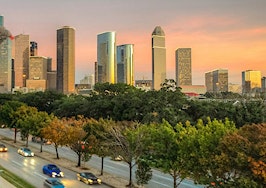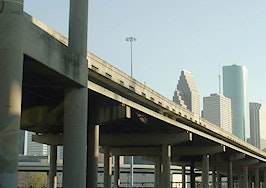- Once outside of the city's downtown walkability decreases significantly.
- Walkability in Houston typically means a more expensive cost of living.
Houston is a car-dependent city where most errands require a car; however, there exist “walkable” neighborhoods that feature transit options and bike infrastructure.
These neighborhoods include the city’s downtown and the areas directly west and southwest of it, according to Walk Score.
With a walk score of 82, Midtown is considered Houston’s most walkable neighborhood. The area also received the second best transit score and a bike score of 72.
Neartown-Montrose received a walk score of 80, despite scoring only a 52 for transit. The neighborhood is one of the top areas in the city for biking, with a score of 77.
Downtown Houston, Fourth Ward and Greenway-Upper Kirby received walk scores of 75, 74, and 73, respectively. Downtown ranks best among all neighborhoods when it comes to transit and biking scores. The Fourth Ward garnered a transit score of 82.
Some of the city’s most walkable neighborhoods are also some of the priciest for housing. Spanning September 2014 to October 2015 the average sales price of a home in Upper Kirby was nearly $900,000. In Montrose, the average sales price was roughly $700,000. Midtown’s average price came in at $430,728 during the 12-month period.
Overall Walk Score dubs Houston as the 22nd most walkable large city in the U.S. The city has roughly 53 bus lines and three light rail lines, along with “minimal bike infrastructure.” The city’s walk, transit and bike scores are 44, 37 and 49, respectively.









